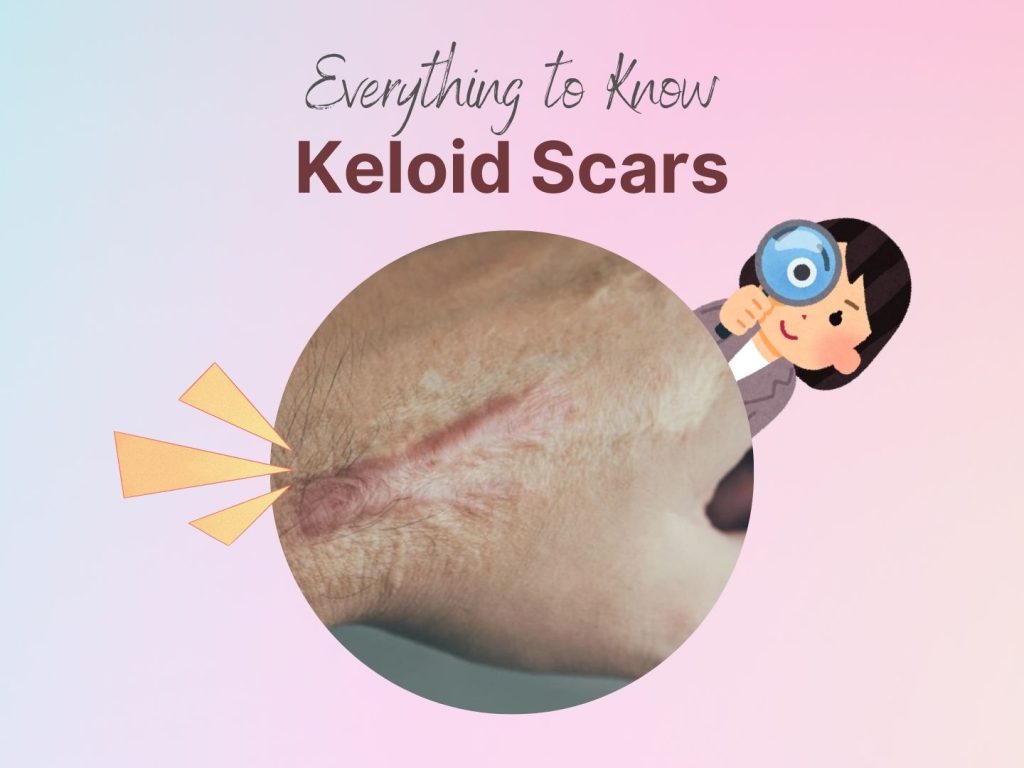Table of Contents
Introduction
Have you ever bothered by some random raised skin bumps that popped up out of nowhere all of a sudden? Is it a pimple? A cyst? Or skin cancer?
Raised skin bumps are very common, and in most cases, they’re harmless. They can result from several conditions, including:
- infections
- allergic reactions
- skin disorders
- skin cancer
Although it may not be necessarily harmful, however spotting a new skin bump can put a damper on anyone’s day as it can be obnoxious to deal with.
Now, let me clear your confusion with a handy guide detailing the different kinds of bumps you might find on your face or body, why they’re showing up, and what kind of treatment you’ll want to seek out.
What is Milia?
Milia, also referred to as milk spots or oil seeds, are tiny white bumps on your skin. It’s a common blemish that affects 40% to 50% of newborns, but anyone can get them on any part of the body. They most often arise on the face and are particularly prominent around eyes area and cheeks.

What causes milia?
Trapped dead skin cells that form cysts below the surface of your skin cause milia. Your body naturally gets rid of dead skin cells by shedding them to make room for new cells to grow and take their place. When your old skin cells don’t fall off from your body, new skin grows on top of them and traps them underneath. Your dead skin cells harden and turn into cysts.
Additional causes of milia include:
- Genetics
- Damaged skin from sun exposure
- Long-term use of steroid cream or ointments.
- An autoimmune response.
Treatment options:
- Exfoliating agent
For widespread lesions, over-the-counter exfoliating agent with salicylic acid (BHA), alpha-hydroxy acid (AHA), or a topical retinoid can help remove the dead skin cells.
- Manual extraction
The lesion may be de-roofed using a sterile needle or comedone extractor by trained personnel and the contents squeezed or pricked out.
- Laser ablation or currettage
They may be destroyed by using diathermy and curretage, or ablative laser treatment have been reported to be effective for very extensive milia.
How to prevent milia?
- Avoiding excessive exposure to the sun.
- Avoid long term usage of thick facial creams/ointments.
- Avoiding the use of steroids for longer than your provider prescribes.
- Frequently exfoliating your skin.
What is hyperplasia?
Sebaceous hyperplasia, is the term used for enlarged sebaceous glands (oil-producing glands), and it happens when the sebaceous gland in your skin become clogged, creating yellowish or flesh-colored bumps on the skin.
These bumps are shiny and usually on the face, especially the forehead and nose. They’re also small, usually between 2 and 4 millimeters wide, and painless. Close inspection reveals a central hair follicle surrounded by yellowish lobules.

What causes Sebaceous hyperplasia?
- Genetics
- Immunosuppressed patient –
- It is more common to happen on patient following organ transplantation or taking immunosuppressant medication eg. Cyclosporine.
- Sun exposure
Treatment:
- Retinol: When applied to the skin, this form of vitamin A can help reduce or prevent your sebaceous glands from clogging.
- Ablative laser therapy: To de-roof and remove trapped sebum.
- Antiandrogen medications: Higher levels of testosterone seem to be a possible cause of sebaceous hyperplasia. Antiandrogen prescription medications lower testosterone and are a last-resort treatment for women only.
What is Seborrhoeic keratosis?
Seborrhoeic keratosis (also known as basal cell papilloma, senile wart, barnacle), is a harmless warty spot that appears during adult life as a common sign of skin aging. The term keratosis refers to a knobby overgrowth of keratinocytes. The keratinocyte is the most common type of skin cell in the epidermis (the outer layer of the skin).

What causes Seborrhoeic keratosis?
- Older age: risk increases with age.
- Genetics
- Pregnancy or hormone therapy.
- Frequent sun exposure.
Treatment:
- Ablative laser therapy (eg Co2 laser) or curettage
Cryotherapy, a relatively pain-free skin tag removal solution in which the base is frozen with nitrous oxide. This causes the tag to blister and drop off after a few days.
What is Skin Tag?
A skin tag, or acrochordon, is a soft skin growth that hangs from a peduncle or stalk. They are benign, noncancerous, tumors of the skin. They consist of a core of fibers and ducts, nerve cells, fat cells, and a covering or epidermis. These benign growths can form anywhere on the body, especially in skin folds and areas where the skin rubs against clothing.

What causes skin tag?
- Genetics
It is not clear exactly what causes skin tags, but some people appear to inherit an increased susceptibility to skin tags.
- Associated medical condition
Skin tags affect both males and females equally, but being obese or having Diabetes Mellitus may increase the likelihood of developing skin tags.
- Pregnancy
Women during pregnancy, possibly due to hormonal changes and high levels of growth factors.
Treatment:
As skin tags are usually harmless, removal is normally for aesthetic or cosmetic reasons.
Skin tag can be burned off by trained medical personnel using
- Cauterisation or ablative laser therapy.
- Cryotherapy
Final Word
Rest assured that you’re not alone if you notice a few small bumps on your face or body. The good news is that most of these bumps—which come in all different shapes, colors, and textures—are totally harmless. In general, if a bump on your face isn’t bleeding, turning darker, or changing in a concerning way, it probably doesn’t need any type of medical intervention. Even then, avoid picking or removing them yourself at home as this could lead to infections or scarring.
Are you struggling with mysterious skin bumps that leave you puzzled and frustrated? It’s time to uncover the secrets behind those bumps and find the right solutions for your skin. Book a free consultation at Kaiteki Clinic to gain expert insights and personalized treatment recommendations.



